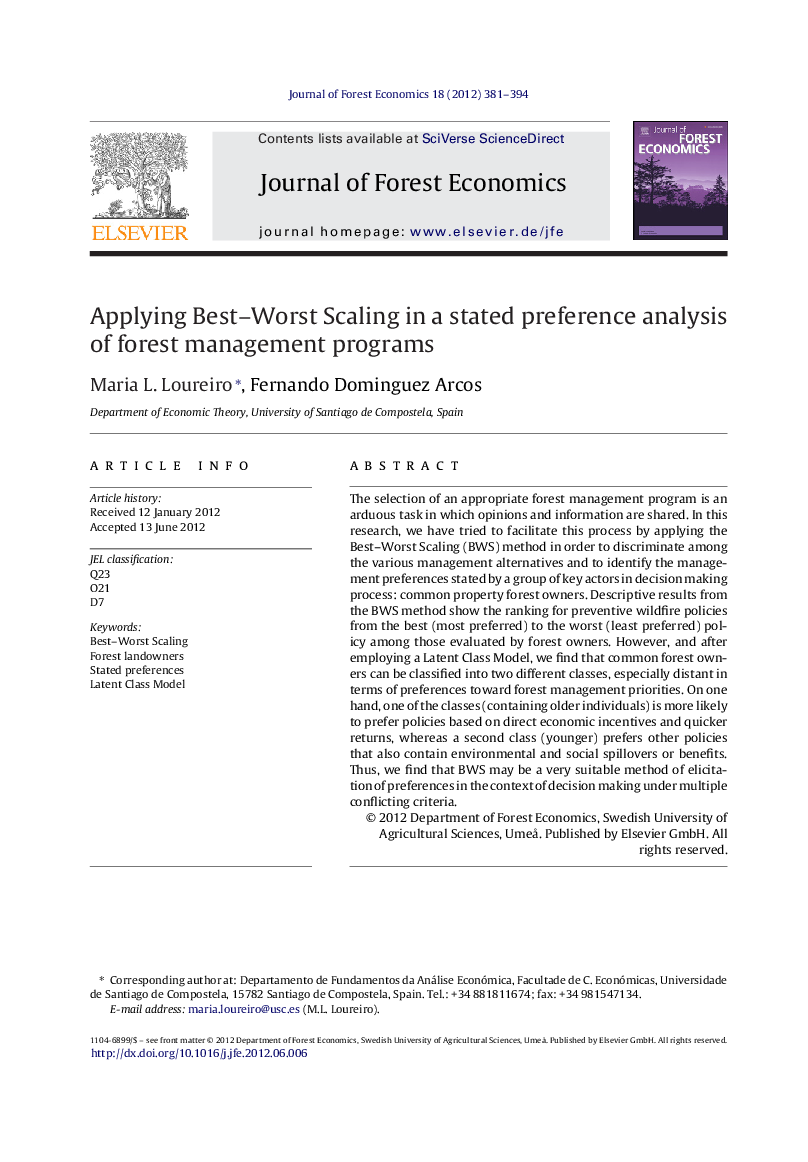| کد مقاله | کد نشریه | سال انتشار | مقاله انگلیسی | نسخه تمام متن |
|---|---|---|---|---|
| 92317 | 159944 | 2012 | 14 صفحه PDF | دانلود رایگان |

The selection of an appropriate forest management program is an arduous task in which opinions and information are shared. In this research, we have tried to facilitate this process by applying the Best–Worst Scaling (BWS) method in order to discriminate among the various management alternatives and to identify the management preferences stated by a group of key actors in decision making process: common property forest owners. Descriptive results from the BWS method show the ranking for preventive wildfire policies from the best (most preferred) to the worst (least preferred) policy among those evaluated by forest owners. However, and after employing a Latent Class Model, we find that common forest owners can be classified into two different classes, especially distant in terms of preferences toward forest management priorities. On one hand, one of the classes (containing older individuals) is more likely to prefer policies based on direct economic incentives and quicker returns, whereas a second class (younger) prefers other policies that also contain environmental and social spillovers or benefits. Thus, we find that BWS may be a very suitable method of elicitation of preferences in the context of decision making under multiple conflicting criteria.
Journal: Journal of Forest Economics - Volume 18, Issue 4, December 2012, Pages 381–394